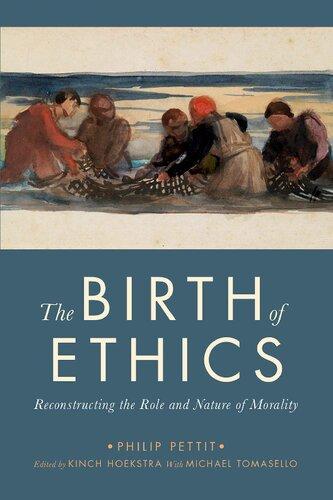RECONSTRUCTING
SCHOPENHAUER’S ETHICS
Hope, Compassion, and Animal Welfare
Sandra Shapshay
Oxford University Press is a department of the University of Oxford. It furthers the University’s objective of excellence in research, scholarship, and education by publishing worldwide. Oxford is a registered trade mark of Oxford University Press in the UK and certain other countries.
Published in the United States of America by Oxford University Press 198 Madison Avenue, New York, NY 10016, United States of America.
© Oxford University Press 2019
All rights reserved. No part of this publication may be reproduced, stored in a retrieval system, or transmitted, in any form or by any means, without the prior permission in writing of Oxford University Press, or as expressly permitted by law, by license, or under terms agreed with the appropriate reproduction rights organization. Inquiries concerning reproduction outside the scope of the above should be sent to the Rights Department, Oxford University Press, at the address above.
You must not circulate this work in any other form and you must impose this same condition on any acquirer.
CIP data is on file at the Library of Congress ISBN 978–0–19–090680–1
Printed by Sheridan Books, Inc., United States of America
For Marcia Baron and Allen Wood, mentors and friends
PREFACE
This reconstruction of Schopenhauer’s ethics has been in the works for nearly ten years, but my interest in Schopenhauer, and especially his philosophy of value, dates back to a conversation that I had with Arthur Danto while I was a graduate student at Columbia University. We were discussing my interest in writing a dissertation on Kantian aesthetics, which prompted him to ask: “Do you know who is the most underrated and underappreciated philosopher in Western philosophy?” I thought about this for a little while and then answered gamely, “Hmmm . . . I don’t know . . . maybe Heidegger?” To which he replied, “Schopenhauer!”
His somewhat enigmatic pronouncement sent me on a quest to find the philosophical treasures locked up in this earlier Arthur’s works, and my work focused at first on his aesthetic theory. But I came to realize that it is his ethical thought that is probably the most underrated part of this underrated philosopher, and the central aim of this book is to defend an interpretation of his ethics as both an original and promising contribution to the subject. Careful attention
to especially Schopenhauer’s value ontology is rewarding not just for our understanding of the history of ethics in the 19th century but also for contemporary reflection in metaethics. Hopefully this work contributes somewhat to making Schopenhauer a less underrated thinker.
I have received substantial help with this project over the years. I am grateful to the Deutscher Akademischer Austauschdienst (DAAD) for a Faculty Research Grant for research at the SchopenhauerArchiv, Frankfurt am Main, Germany, in Fall 2009. Their support also gave me the opportunity to have illuminating conversations with Professor Matthias Koßler, President of the SchopenhauerGesellschaft. Thanks are due also to the College Arts and Humanities Institute (CAHI) at Indiana University–Bloomington, which awarded me a Faculty Fellowship in 2012, providing me a teaching release to concentrate on early chapters of this book.
Also beneficial was the chance to try out the arguments in these chapters at several conferences and symposia. Thanks are due to Alistair Welchman, who organized the Brackenridge Workshop on the philosophy of Schopenhauer, University of Texas at San Antonio, 2013, and to Judith Norman, Bernard Reginster, and other speakers and audience members who pressed a number of objections to the views in Chapter 4 at that event. A symposium on Schopenhauer’s views on love and compassion at the University of Ghent in 2013, organized by Bart Vandenabeele, also provided a wonderful opportunity for Alex Neill and myself to try out some of the arguments in Chapter 3, and I’m indebted to audience members at that event for excellent discussion. I am also appreciative of the opportunity to present drafts of chapters at the North American Division of the Schopenhauer Society at the APA Central Division meetings organized by David Cartwright, and at New York University’s annual conference on Modern Philosophy in 2014, organized by Don
Garrett, Béatrice Longuenesse, and John Richardson. The session chair, Desmond Hogan, my commentator, Julian Young, and the lively audience at NYU helped me to refine Chapters 4 and 5. My colleague Marcia Baron very kindly organized a workshop on Kant and Schopenhauer’s Aesthetics and Ethics at the University of St. Andrews in 2014, and I benefitted very much from discussion there with Kyla Ebels-Duggan, Kate Moran, Adrian Piper, Martin Sticker, and Jens Timmerman. Finally, I’d like to thank the organizers of the University of North Carolina at Chapel Hill 49th annual colloquium, for a chance to try out the ideas in Chapter 2, and to John Richardson, whose astute commentary helped me to refine that chapter enormously.
I am highly indebted to the few scholars who have paid sustained and careful attention to Schopenhauer’s ethical thought, and especially to David Cartwright, Christopher Janaway, Julian Young, and John Richardson, who read and commented extensively on drafts of several chapters in this book. The interpretation on offer here also developed in conversation with Alex Neill (with whom I co-authored an earlier version of Chapter 3), Matt Altman, Judith Norman, Elizabeth Millán, Fred Schmitt, Marco Segala, Alistair Welchman, Dennis Vanden Auweele, Eric von der Luft, and Gudrun von Tevenar, as well as with wonderful graduate students at Indiana University–Bloomington, Sarah Adams, Uri Eran, Tristan Ferrell, Noam Hoffer, Daniel Lindquist, Sean Murphy, and Levi Tenen.
Thanks are due to my editor at Oxford University Press, Lucy Randall, who checked in with me at regular intervals for several years, and who has shepherded this project to completion with the utmost professionalism. I’d like also to signal my appreciation to my daughters, Molly and Marlena, who support their “working mom” every day with their warmth, intelligence and zest for life, and to my husband, Steve, for being a true partner in all things.
Finally, this book would likely not have been possible without the intellectual and moral support of my two philosophical role models, colleagues, and friends, Marcia Baron and Allen Wood. And even if the book would have been possible without them, it would have been a far worse book had they not conversed with me extensively throughout the entire process.
CITATIONS TO SCHOPENHAUER’S WORKS
Works by Schopenhauer are referenced in the text parenthetically, using the abbreviations listed below. Where available, I have used the standard English translations in the Cambridge Edition of the Works of Schopenhauer, general editor Christopher Janaway.
EFR Schopenhauer’s Early Fourfold Root: Translation and Commentary [Über die vierfache Wurzel des Satzes vom zureichenden Grunde] (original dissertation 1813), ed. and trans. F. C. White (London: Ashgate, 1997).
FR On the Fourfold Root of the Principle of Sufficient Reason [Über die vierfache Wurzel des Satzes vom zureichenden Grunde] (1847/1864), in On the Fourfold Root of the Principle of Sufficient Reason and Other Writings, ed. and trans. David Cartwright, Edward Erdmann, and Christopher Janaway (Cambridge: Cambridge University Press, 2015), 1–198.
FW Prize Essay on the Freedom of the Will [Über die Freiheit des Willens] (1839), in The Two Fundamental Problems of Ethics (1841/1860), trans. Christopher Janaway
(Cambridge: Cambridge University Press, 2009), 31–112.
GB Gesammelte Briefe, ed. Arthur Hübscher (Bonn: Bouvier, 1978).
HN 1-5 Der handschriftliche Nachlaß, 5 vols., ed. Arthur Hübscher (Frankfurt am Main: Kramer, 1970).
MR 1-4 Manuscript Remains, 4 vols, ed. Arthur Hübscher and trans. E. F. J. Payne (Oxford: Berg, 1988). This is a translation of HN vols. 1–4.
OBM Prize Essay On the Basis of Morals [Über die Grundlage der Moral] (1840), in The Two Fundamental Problems of Ethics (1841/1860), trans. Christopher Janaway (Cambridge: Cambridge University Press, 2009), 113–258.
PP I Parerga and Paralipomena: Short Philosophical Essays [Parerga und Paralipomena] (1851), ed. and trans. Christopher Janaway and Sabine Roehr (Cambridge: Cambridge University Press, 2014).
PP II Parerga and Paralipomena [Parerga und Paralipomena] (1851), ed. and trans. Adrian Del Caro and Christopher Janaway (Cambridge: Cambridge University Press, 2015).
SW 1–7 Sämtliche Werke, ed. Arthur Hübscher (Mannheim: Brockhaus, 1988), vols. 1–7.
VC On Vision and Colours [Über das Sehn und die Farben] (1816/1854), ed. and trans. David Cartwright, Edward Erdmann, and Christopher Janaway (Cambridge: Cambridge University Press, 2015), 199–302.
WN On Will in Nature [Über den Willen in der Natur] (1836/1854), ed. and trans. David Cartwright, Edward Erdmann, and Christopher Janaway
c itations to s cho P enhauer’s Works
(Cambridge: Cambridge University Press, 2015), 303–460.
WWR I The World as Will and Representation [Die Welt als Wille und Vorstellung], vol. I (1818/1844/1859), ed. and trans. Christopher Janaway, Judith Norman, and Alistair Welchman (Cambridge: Cambridge University Press, 2014).
WWR II The World as Will and Representation [Die Welt als Wille und Vorstellung], vol. II (1844/1859), trans. E. F. J. Payne (New York: Dover, 1966).
RECONSTRUCTING SCHOPENHAUER’S ETHICS
Introduction
At the apex of his influence, from about 1860 up to the start of World War I, Arthur Schopenhauer was known first and foremost as a philosopher of pessimism, sparking an entire “pessimism controversy” in German philosophy in the latter part of the 19th century.1 Still today, his main reputation is as one of the few philosophers to have argued that it would have been better never to have been, for “life is a business which does not cover its costs” (WWR II, chap. 46, 574). Otherwise put, since most of life is purposeless striving and suffering, and there is no God to redeem it all in another life, ascetic resignation from the will-to-life is the most justified response. This none-toocheerful outlook famously captured the attention of Nietzsche, who spent much of his philosophical energies countering Schopenhauer’s resignationism, and devising ways authentically to affirm life, in spite of what he thought was Schopenhauer’s mostly correct diagnosis of the human condition.2
1. For a detailed account of this controversy see Frederick C. Beiser, Weltschmerz: Pessimism in German Philosophy 1860–1900 (Oxford: Oxford University Press, 2016).
2. For two excellent accounts of Nietzsche’s grappling with Schopenhauer’s pessimism up through his late works, see Christopher Janaway, Beyond Selflessness: Reading Nietzsche’s Genealogy (Oxford: Oxford University Press, 2007) and João Constâncio, “Nietzsche and Schopenhauer: On Nihilism and the Ascetic ‘Will to Nothingness,’” in The Palgrave Schopenhauer Handbook, ed. Sandra Shapshay (London: Palgrave-Macmillan, 2017), 425–446.
This book aims to complicate and challenge the predominant picture of Schopenhauer’s ethical thought, and argues that while the resignationist Schopenhauer—the one I shall call the “Knight of Despair”—represents one side of this thinker, there is another side, the “Knight with Hope,” and this aspect of his ethical thought is in direct tension with the resignationist one. Although a few commentators to date have aimed at reconstructing Schopenhauer’s somewhat hopeful ethics of compassion (most notably, David Cartwright, Christopher Janaway, John Atwell, and Gudrun von Tevenar), they have generally held that Schopenhauer sees the compassionate person as attaining only a second-best insight into the nature of the world and a second-best comportment within it.3 What I shall call the “One Schopenhauer” view sees a neat hierarchy here, with the greatest insight and comportment as embodied in saintly resignation from life altogether. Yet, as I will suggest in what follows, this traditional view masks several fundamental tensions between his two ethical ideals. In contrast, I urge a “Two Schopenhauers” view, for these two ethical ideals are actually mutually incompatible. Accordingly, instead of reading Schopenhauer as having a hierarchy of (1) resignationism, and (2) the ethics of compassion, one should rather see these as competing ethical ideals in his thought, or so I shall argue.
Although I do not believe Schopenhauer himself was aware of this as a fundamental consistency problem within his ethical thought, he does provide a separate elaboration of the ethics of compassion in his On the Basis of Morals [Über die Grundlage der Moral], and this elaboration is not terribly pessimistic and is decidedly non-resignationist. Thus, I believe the Knight with Hope view not only constitutes a
3. Gudrun von Tevenar does evince some worries that the ethics of compassion and resignationism are in tension in her essay, “Schopenhauer and Kant on Menschenliebe,” in The Palgrave Schopenhauer Handbook, ed. Sandra Shapshay (London: Palgrave-Macmillan, 2017).
more defensible philosophical theory as such, but also is an interpretation of Schopenhauer’s ethical thought that is what the thinker actually did say at least some of the time. It is the main task of this book to reconstruct the ethical theory that he presents in this work especially.
Careful reconstruction of his ethics of compassion in On the Basis of Morality in particular yields a very interesting hybrid theory of a Kantian moral theory and sentimentalism à la Hutcheson, Smith and Hume. In brief, my main claim is that Schopenhauer retains more from Kant’s ethics (construed in a moral realist rather than constructivist fashion) than commentators to date have acknowledged. What he retained is the notion that human beings have inherent value that calls for a certain kind of moral treatment. Schopenhauer departs from Kant’s notion of rational nature as being “an end in itself” and having “dignity beyond all price,” however, widening the criterion for having inherent value from Kant’s criterion, namely, having a rational nature, to “having a world” or “being a microcosm.” That is to say, any sentient, conscious being who has a life that the being cares about has some degree of inherent value for Schopenhauer. Further, Schopenhauer departs from the notion that inherent value means “absolute value” that trumps any other concern; rather, I argue, the theory regards inherent value as coming in degrees and providing pro tanto rather than absolute grounds for ethical treatment. I also argue that according to Schopenhauer, we know the inherent value of sentient beings via a feeling, namely, the feeling of compassion.
Thus, this moral realist foundation—the value ontology—is complemented by sentimentalism in two ways. First, the feeling of compassion plays a key moral-epistemic function in tracking inherent value. And second, the ground for any action to have true moral worth, for Schopenhauer, is that it was done out of the feeling of compassion. So, in line with sentimentalists, feeling—especially the feeling of compassion—is crucial to our understanding of the nature
of morality. Yet, the ultimate basis for the normativity of the feeling of compassion is that it actually tracks the inherent value with which sentient beings are endowed. Despite this sentimentalist aspect, however, the theory really bottoms out justificationally in a moral realism about inherent value.
This hybrid ethical theory offers a novel synthesis for the contemporary ethical-theoretical landscape and has several prima facie attractions. First, by widening the scope of beings who count as having inherent value, Schopenhauer’s ethics is far less anthropocentric than is Kant’s, and enables him to incorporate concern for animal welfare and rights much more easily into his system. Contemporary Kantians are liable to tell rather complicated stories about there being no direct duties to animals, only duties concerning them, or about animals being morally considerable only because cruelty to them affects the character of human beings in a negative fashion.4 These accounts sound, ironically, a bit Ptolemaic in contrast to Schopenhauer’s ethics, in which animals are directly, morally considerable.
Second, Schopenhauer’s value ontology consists of a spectrum or degrees of inherent value, and thus, he can bring non-human animals into the community of morally considerable beings without having to bring them in as fully as human beings. This is at least prima facie appealing to those for whom a strong animal rights view, such as Tom Regan’s, is implausibly strong.5 Schopenhauer’s way of thinking about inherent value as coming in degrees, then, is more akin to Mary Anne Warren’s weaker animal rights view, and provides a systematic justification for such a view.6
4. See, for instance, Barbara Herman, “We Are Not Alone: A Place for Animals in Kant’s Ethics,” in Kant on Persons and Agency, ed. Eric Watkins (Cambridge: Cambridge University Press, 2018), 174–191.
5. See Tom Regan, The Case for Animal Rights, rev. ed. (Berkeley: University of California Press, 2004).
6. Mary Anne Warren, Moral Status: Obligations to Persons and Other Living Things (Oxford: Oxford University Press, 1997).
Third, while Schopenhauer extends the realm of morally considerable beings only to sentient beings who “have a world”—rather than to all living beings such as plants, or to species and ecosystems as a whole—the extension to all sentient beings nonetheless speaks to many of the concerns of contemporary environmentalism. Insofar as human beings should be compassionate toward non-human animals, this provides prima facie grounds for protecting the habitat of those animals as well. Further, Schopenhauer’s aesthetic theory provides a separate and complementary ground from which to argue for environmental protection on his system.
Notwithstanding these attractions, there are facets of Schopenhauer’s system that make his ethical theory problematic. As alluded to above, by the lights of Schopenhauer’s pessimism, resignationism seems to be normatively preferred, undermining the value of the ethical ideal of compassion. In Chapter 1, against the standard “One Schopenhauer” view, which sees a neat hierarchy of (1) resignationism, (2) the ethics of compassion, [and in the Parerga and Paralipomena he throws in (3) eudaimonology as well], I urge the “Two Schopenhauers” view: Far from there being a neat hierarchy, there are fundamental tensions between resignationism and the ethics of compassion. Ultimately, I shall argue, these are really two incompatible ethical ideals.
In Chapter 2, I suggest that choosing between which of these incompatible ethical ideals is superior by the lights of Schopenhauer’s own system depends on the “fulcrum of hope.” Whether we should embrace the resignationist, pessimist Knight of Despair, the “Dürer Knight” as Nietzsche called him, or whether we should rather embrace the Knight with Hope, as I shall call him, depends upon whether according to his own system, there are good grounds for hope. I shall argue that even on Schopenhauerian grounds we should prefer the ideal of compassion to that of resignationism, and not just because most of us will never get to salvation. Rather, it is because as
Schopenhauer’s own philosophical thinking evolved, there emerged good grounds for hope. And where there are good grounds for hope, resignation would actually constitute a misguided shirking of one’s responsibility to “help everyone to the extent that you can” (OBM, 162).
One of the main stumbling blocks to hope that the world can get substantially better, however, are the static, Platonic Ideas. In Chapter 2, I shall address the role of the Ideas in his system, and I shall argue that we should see Schopenhauer’s own philosophy as dynamic and that in the course of his intellectual development, as he gets wind of proto-Darwinian thought, he comes to drop the Platonic Ideas from his philosophy of nature. Another stumbling block to hope is that it seems that Schopenhauer’s metaphysics of will, even without the Ideas, constitutes good grounds for pessimism and resignationism. Yet, Schopenhauer’s allegiance to transcendental idealism prevents him from being an older-style transcendent metaphysician, one who could offer the identification of the thing-initself as “Will” in a foundationalist way to prove that the sufferings of the world cannot be significantly diminished. His identification of the thing-in-itself with “Will,” I shall argue, should be understood as “metonymic” and his metaphysics of will should be understood as “hermeneutic” rather than transcendent.
By “metonymic” I mean that Schopenhauer names the whole (the thing-in-itself) after its best known part, namely, one’s own “will” on the strength of one’s non-observational knowledge of one’s own willing—that I will—and the fact that it is the most immediate intuition one has. By “hermeneutic” I mean that the model of metaphysics that he outlines as the proper one is that of “deciphering” or “interpretation” of the world. In offering such an interpretation, the philosopher uses all of the phenomenological resources of inner and outer experience, and seeks confirmation by the interpretation’s ability to make sense of phenomena as a whole. Thus, appropriate
metaphysics, on my reading of Schopenhauer’s view, is similar to offering a well-justified interpretation of a work of art. Like an artistic interpretation, it should stand or fall on how well it accords with the evidence in that work (in the case of the world, the empirical evidence), and with how well it makes sense of the work as a whole. Admittedly, one could offer an interpretation of the world that is also transcendently metaphysical, and this is the way the standard view would read Schopenhauer. I suggest, however, that especially in the second volume of WWR, Schopenhauer offers an always immanent metaphysics. Further, I argue that his philosophical methodology is coherentist rather than foundationalist, and this makes his metaphysics of will far less capable of grounding pessimism than most commentators have thought. Whether or not the sufferings of the world can be significantly diminished is ultimately a question to be addressed by experience, and settled on the basis of empirical evidence.
In sum, from the first two chapters, I aim to show that we should prefer the Knight with Hope. Schopenhauer’s thought develops from 1818 to 1859, and this development is one that supports—whether Schopenhauer recognized this or not—the hope and compassion position, and away from the resignation and renunciation position. In this book, I am thus consciously emphasizing the strand present in Schopenhauer’s writings that I find more appealing philosophically than the one emphasized by the standard reading.
A third problem for seeing Schopenhauer as a bona fide ethicist is his apparent hard determinism. In Chapter 3, I trace Schopenhauer’s grappling with the problem of how freedom is possible from his 1813 dissertation and The World as Will and Representation (1818) to his essay “On the Freedom of the Will” (1839), and I offer an interpretation of Schopenhauer’s compatibilism that shows how it departs from but is still similar to Kant’s compatibilism. Ultimately, for Schopenhauer, though we are each born with an innate character
and are shaped largely by our empirical circumstances, still, rational beings are responsible for their characters, and can shape and even, albeit rarely, transform them.
In Chapter 4, I turn to the positive business of reconstructing Schopenhauer’s Kantian/Sentimentalist hybrid ethics, which I term “compassionate moral realism.”7 Contrary to those like Reginster and Janaway, I argue that Schopenhauer holds that all sentient beings are endowed with inherent value, and that this makes them morally considerable. The feeling of compassion plays a crucial moralepistemic role here as the means by which such inherent value is known in Schopenhauer’s system. In other words, the feeling of compassion tracks inherent value. Further, I lay out Schopenhauer’s value ontology, and the ways in which beings can have different degrees of inherent value, based on the complexity of their sentient nature. In this chapter, I also address some of the problems for Schopenhauer’s robust—perhaps all-too robust—claim that the feeling of compassion is both necessary and sufficient for actions to have moral worth. In his main arguments for compassion as the sole basis of morality, Schopenhauer does not take into account the role that reason seems to play in both determining the right action to take, and in motiving such actions (just actions in particular). Intent on diminishing the importance of reason in ethics, Schopenhauer all but ignores its role except that he sees the formulation of the rational, ethical principle “harm no one; rather help everyone as much as you can” as an important “reservoir” for compassion, when the feeling is not actually “flowing.” He also recognizes the need for reason in the political
7. Colin Marshall has a book in press as I write this, titled, “Compassionate Moral Realism,” where he defends a novel metaethical position that is to some extent Schopenhauer inspired (though other influences include Wollaston and Locke). Since I believe we independently discovered this term I shall use it here to label Schopenhauer’s ethical system, noting that my use should not be taken as synonymous with Marshall’s contemporary metaethical position.
sphere, where it is required painstakingly to construct the legal architecture that will keep the peace and protect rights as well as possible, and in the personal sphere, Schopenhauer recognizes the need for and power of rational reflection in developing a more pro-social “acquired character.” What Schopenhauer is really keen to defend in OBM, however, is the notion that the ultimate source or foundation of morally worthy action is the feeling of compassion. But any reconstruction of Schopenhauer’s ethics, I argue, should acknowledge that in the majority of cases where there is some moral perplexity to the matter, the feeling of compassion is neither necessary nor sufficient for acting in a morally worthy manner and needs to be supplemented by rational reflection which channels compassion toward the right action (known via reflection).
In Chapter 5, I aim to assuage these worries partially by reconstructing the various roles that reason does seem to play in Schopenhauer’s ethics and political thought. Then I utilize what he says in these contexts to modify the picture he gives of the role of reason in ethics. Finally, in the Conclusion, I highlight the novelties of my interpretation as well as some of the attractions and lingering problems in the Schopenhauerian ethical system I have reconstructed, suggesting future lines of research into the ways that Schopenhauer’s less anthropocentric ethics can support a moderate animal rights view as well as a moderate environmentalism.











